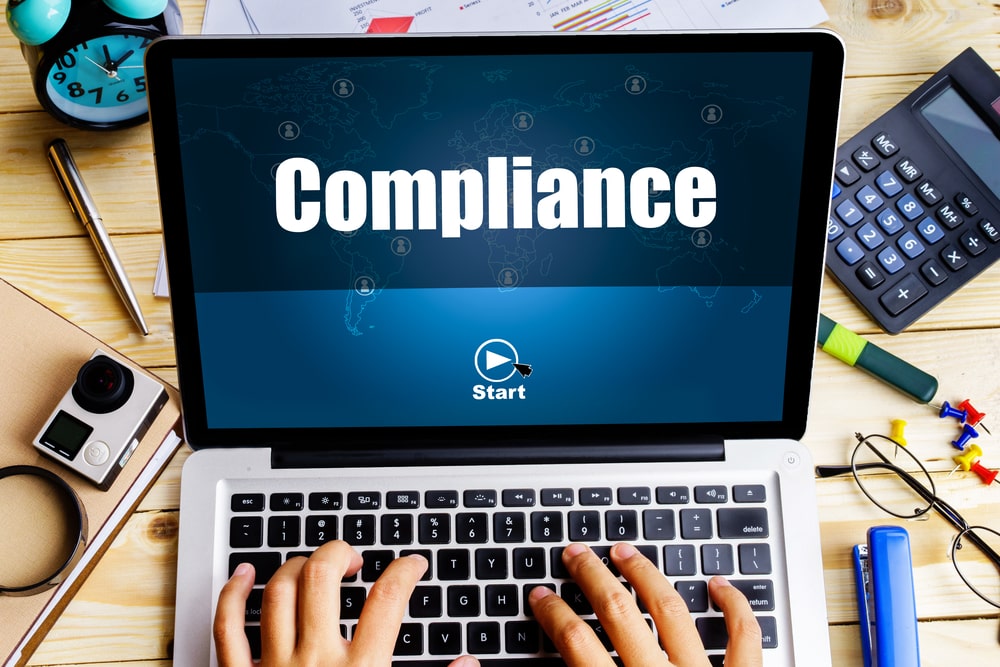When promoting inclusivity among individuals with disabilities, website legal compliance under the watchful eye of the Americans with Disabilities Act and the Equality Act 2010 in the UK is vital.
Non-compliance with data protection laws like the General Data Protection Regulation (GDPR) or the California Consumer Privacy Act (CCPA) can cause serious repercussions for individuals, businesses, and organizations. Failing to meet website compliance requirements for website accessibility can expose website owners to all types of risks, from legal requirements to reduced brand reputation.
Website compliance laws also mandate specific data security measures for keeping your personally identifiable information and sensitive personal information safe.
Keep reading to learn more about the legal requirements for websites, including an overview of website legal requirements across different jurisdictions, and how an accessibility statement can demonstrate commitment to inclusivity.

What is Website Legal Compliance?
The United States and many international countries adhere to the Web Content Accessibility Guidelines (WCAG). Developed by the World Wide Web Consortium (W3C), this set of innovative guidelines operates on the perceivable, operable, understandable, and robust (POUR) principles that govern how businesses and organizations design and modify their websites.
As website compliance requirements vary depending on the type of website and jurisdiction (e.g., the United States versus Canada), there are different global standards. They include, but are not limited to, Web Content Accessibility Guidelines (WCAG), Section 508 of the Rehabilitation Act (USA), Accessible Rich Internet Applications (ARIA), and International Organization for Standardization (ISO) 9241-171.
Overview of Website Compliance Requirements
As mentioned, web accessibility compliance requirements vary by region. For example, the United States follows the Americans with Disabilities Act (ADA) and Section 508, which are web accessibility laws and regulations that require that websites, electronic devices, and information technology be fully accessible to individuals with disabilities.
One important distinction is that the Americans with Disabilities Act does not reference websites. However, its legal status has been interpreted as running under the jurisdiction of digital websites. One of the best examples of this was the Robles v. Domino’s Pizza, LLC (2019) case, where the 9th Circuit Court of Appeals ruled in favor of the plaintiff, saying that Domino’s lacked an accessible website and mobile app.
Data Protection Regulations
One of the most significant components of website legal compliance is protection regulations.
Many data protection policies govern this. Two of the most important are the General Data Protection Regulation (GDPR) in Europe and the California Consumer Privacy Act (CCPA), which govern how websites can collect and manage your personally identifiable data to avoid being breached.
Other laws and regulations that apply depending on the industry include the Air Carrier Access Act (ACAA) and the Communications and Video Accessibility Act (CVAA), which require that airline websites, kiosks, online video captions, and video conferencing platforms adhere to the latest accessibility standards.

Website Legal Requirements for Different Jurisdictions
In the world of accessibility, different jurisdictions abide by different rules. Let’s examine the federal laws and guidelines governing the United States and the European Union in depth.
United States
In the United States, two overarching website legal compliance standards are set by the Americans with Disabilities Act and section 508 of The Rehabilitation Act that oversees the federal government and Associated contractor’s information technology, ensuring it adheres to WCAG 2.0 Level AA standards.
Americans with Disabilities Act (ADA)
The Americans with Disabilities Act is the biggest driver of website legal compliance in the United States. This law guarantees full participation for individuals with disabilities in digital and public spaces. Specifically, websites must be fully accessible using assistive technologies like screen readers and magnifiers.
Web Content Accessibility Guidelines
The Americans with Disabilities Act is one of the foremost advocates of web content accessibility guidelines, a set of internationally recognized rules that developers use to guide physical and digital space design for individuals with disabilities.
The standards operate on four key principles: Perceivable, Operable, Understanding, and Robust, known by the acronym POUR. Let’s explain what each of these principles means:
Perceivable: This operating principle under the WCAG ensures that information is presented in ways that all individuals with disabilities can better interpret. This means introducing key elements on a website, such as text alternatives for non-text content, transcripts, high text and background contrast, counter-display adjustments, and much more.
Operable: The second principle focuses on an individual’s ability to operate any website, regardless of disability. Physical enhancements improve the overall navigation experience, including keyboard management (ensuring everything performed on the website can be done using keyboard shortcuts instead of a mouse), extended time limits, transparent navigation systems, and eliminating other things that can frustrate one’s digital experience.
Understandable: This applies to the principle that content must be presented in a way that’s easily understandable by all individuals with disabilities. Critical elements include readable content and ensuring predictable behavior regarding website performance. In addition, there should be extensive input assistance, so individuals with disabilities can take advantage of error messages and clearly defined labels in other assisted methods to help complete forms.
Language clarity, with the options to switch between sign languages should be available. It’s also essential for assistive technologies like screen readers that can interpret multiple languages. Remember, 15% of the world has a partial or total disability, so every website visitor counts.
Robust: This fourth principle of the Web Content Accessibility Guidelines (WCAG) considers compatibility with current and future system technologies, such as screen readers, magnifiers, and switch access. It also means optimizing web content with proper semantic HTML and other coding best practices.
Outside of that, web development operations ensure functionality across platforms and operating systems, providing an inclusive experience no matter the device or browser an individual with a disability is using.
Semantic HTML markup is also important. Establishing a hierarchy with on-site content is imperative, as well as applying proper headings, list tables, and other elements that allow screen readers to verbalize what’s on the screen. By following these rules, developers can ensure that all individuals with disabilities can enjoy full and equal inclusivity.
Website legal compliance is especially important in the classroom, where all students with disabilities must have equal and full access to information and technology. Several pieces of technology, such as text-to-speech software, screen readers, and closed captioning programs, can be used to achieve this.
Text-to-Speech Software
A critical aspect of text-to-speech software is screen readers, which are software applications that help convert on-screen text into audible speech, allowing the visually impaired to better digest content.
The most popular TTS programs are Kurzweil 3000 and Natural Reader. Both programs provide enhanced text-to-speech functionality by adapting to different learning styles. They also support people with dyslexia by using adjustable reading speeds, highlighted text, specialized fonts, and other tools that can help improve retention and focus.
Speech-to-Text Software
Unlike the above, speech-to-text software allows individuals with disabilities to convert audio into written text through various voice recognition systems. Programs like Microsoft Speech Recognition and IBM Watson Speech to Text offer multiple language support and full customization, where users can input their preferred vocabulary, an excellent choice for people working in technical fields.
Additionally, the best speech-to-text software is capable of integrating with other applications like word processors, allowing students and employees to work more effectively, especially when transcribing or taking notes.
Notables: Dragon NaturallySpeaking, Google Docs Voice Typing, Microsoft Speech Recognition, IBM Watson Speech to Text, Otter.ai

Magnifiers
These allow the visually impaired to view enlarged text on a screen, allowing them a deeper understanding of the material. Programs like ZoomText and MAGic offer numerous screen magnification capabilities, such as the ability to enhance color, zoom in, zoom out, and view full-screen magnified imagery in alignment with the cursor, and much more.
Print magnifiers and digital magnifiers also exist, allowing users to magnify texture images on print.
These are usually physical handheld devices. Alternatively, low-vision individuals could use magnifiers, which may suit larger group settings. If you have a large budget, you can opt for electronic magnifiers or even magnifying prescription or non-prescription lenses.
Closed Captioning Tools
Another critical tool for accessibility in the classroom is closed captioning tools, which allow individuals with disabilities to enjoy transcriptions for meetings, virtual meets, and other online forums.
Otter.ai and Google Meet Live Captions are two recommended closed captioning tools. Both do a phenomenal job of real-time transcription and multiple language support. Plus, Google Meet Live Captions allows users to customize the fonts, improving readability.
If you are a YouTube fan, you’ll also be pleased to know that YouTube offers YouTube Automatic Captions, which automatically generates captions for all of the videos on the site. Like Google, it also provides multilingual support, with the option to turn them on and off as desired.
Lastly, CART (Communication Access Real-Time Translation) is also highly recommended for real-time captioning in classrooms and meetings. Captioning add-ons and tools, such as on-screen displays and printed transcripts, make understanding transcripts and life events easier.
Notables: Otter.ai, Google Meet Live Captions, YouTube Automatic Captions, Rev, CART (Communication Access Real-Time Translation)
Screen Readers
Another heavily utilized accessibility tool in the classroom is screen readers that help transform on-screen text into audible speech.
Some of the more popular options include JAWS (Job Access With Speech) and NVDA (NonVisual Desktop Access), both of which emphasize the Web Content Accessibility Guidelines (WCAG)
There are also closed captions and subtitles. They allow students with hearing impairments to better engage in classes, especially those learning a new language.
Notables: WS (Job Access With Speech), NVDA (NonVisual Desktop Access), VoiceOver, Narrator, TalkBack
Section 508 Compliance
One of the most important pieces of legislation related to accessibility in the United States is Section 508 Compliance, which requires that all federal agencies and organizations make electronic communications more accessible to individuals with disabilities. It is the most comprehensive set of website accessibility standards offered to entities that receive federal grants to remain in operation.
The Section 508 guidelines are part of the broader Web Content Accessibility Guidelines (WCAG), which offer a set of internationally recognized guidelines that govern how websites and mobile applications are designed with accessibility in mind, operating on the four core principles of Perceivable, Operable, Understandable, and Robust.
Another important aspect of Section 508 compliance is its heavy focus on improving accessibility for visually impaired users. For example, its guidelines call for all images, videos, and website multimedia to include alternative text on images so that screen readers can accurately interpret what the content suggests. For example, on a federal agency website, wherever an image or chart has descriptive alternative text, screen readers can describe it to the visually-impaired in an audible format.
There are legal penalties for non-compliance with Section 508 guidelines. Expect to face serious legal repercussions, such as loss of federal funding, lawsuits by the federal government, and other penalties as mandated by the Americans with Disabilities Act.

ISO 9241-171 (International Organization for Standardization)
Aside from Section 508 of the Rehabilitation Act and accessible rich internet applications, another popular global accessibility standard is ISO 9241-171 (International Organization for Standardization), which focuses on accessible software design for individuals with disabilities.
Specifically, it ensures that websites and mobile applications are more accessible to navigate by incorporating consistency in design, compatibility with assistive technology like voice control systems, and other considerations to expand a greater understanding of digital content for anyone with visual, auditory, cognitive, or motor impairments.
European Union
Outside of the United States, arguably the most significant region that employs accessibility standards is the European Union, which requires all public sector websites to adhere to WCAG 2.1 Level AA standards.
Created by the World Wide Web Consortium (W3C) and integrated as part of the Web Content Accessibility Guidelines (WCAG), this set of guidelines ensures improved web content access for individuals with disabilities, covering the majority of accessibility needs by the most prominent groups possible.
General Data Protection Regulation (GDPR)
Established by the European Union in 2018, the General Data Protection Regulation (GDPR) protects the rights of European citizens when it comes to their privacy and personal data.
Specifically, it ensures that organizations processing personal data do so very safely, with all data subject rights presented to the consumer. For example, the consumer should be notified how their data is accessed and used and have the right to opt out of these communications if needed.
In addition, GDPR requires that users consent to data collection in several ways, including through forms and cookies. They should clearly explain how the personal data has been collected and what it is being used for, giving users the ability to opt in or out. Any website not compliant with this policy can be subject to fines mandated by the European Union.
In short, GDPR is essential for website compliance and accessibility in the European Union, ensuring that individuals’ rights in the digital world remain protected.
Other Countries’ Website Legal Compliance Regulations
Two other countries that come to mind are Canada’s Accessible Canada Act and Australia’s Disability Discrimination Act (DDA) Let’s briefly discuss each of them:
Accessible Canada Act
Started in 2019, the Accessible Canada Act governs all Canadian organizations under Federal jurisdiction, including federally regulated ones like telecommunications companies. The Act requires these organizations to make their websites and mobile applications more accessible to individuals with disabilities. The goal is that by 2040, all Canadians with disabilities can fully participate in all digital and physical aspects of Canadian Society.
Specifically, it calls for WCAG 2.0 Level AA as the minimum standard to apply to websites, which promises to introduce key features like text alternatives, keyboard accessibility, high color contrast, scalable text, and much more.
In Canada, the two oversight authorities that enforce the Accessible Canada Act are the Accessibility Commissioner and the Canadian Accessibility Standards Development Organization (CASDO), which work tirelessly to develop accessibility standards, implement the Accessible Canada Act, and provide guidance for compliance through ongoing best practices, training materials, stakeholder engagement (e.g., accessibility industry professionals) within their overall field of accessibility and much more.
Disability Discrimination Act (DDA)
Like Canada’s Accessible Canada Act, Australia’s DDA sets WCAG 2.1 Level AA compliance as the standard for all federal and state websites in the region. This Act is enforced by the Australian Government Digital Transformation Agency (DTA), which has its own set of guidelines for improved WCAG compliance. Specifically, it also aims to prevent discrimination against people with disabilities in all areas of the digital and physical realm, including workspaces in education, public services, and public facilities. The Australian Human Rights Commission (AHRC) oversees all aspects of the ACT and ensures that it applies to websites and online services.
One of the main reasons the Disability Discrimination Act exists is to adhere to the United Nations Convention on the Rights of Persons with Disabilities guidelines, which call for improved digital inclusivity to protect the rights of all individuals with disabilities.
European Accessibility Act (EAA)
Another essential legal compliance standard for accessibility that applies to the European Union is the European Accessibility Act (EAA). Created in 2019, it ensures that all EU member states adhere to digital and physical accessibility standards across all public services, including banking, transportation, and commerce.
Like many regions, the European Accessibility Act (EAA) heavily enforces WCAG 2.1 Level AA as the accessibility standard. Its added goal is to make all EU businesses fully compliant by June 28th, 2025, making it one of the most aggressive pieces of accessibility legislation.
The EAA establishes a unified approach to accessibility across more than 20 countries, so it holds great promise for advancing accessibility efforts in the region for both public and private businesses.
United Kingdom – Equality Act 2010
The Equality Act 2010 is the United Kingdom’s most significant legislative effort to advance accessibility, ensuring non-discrimination for all individuals with disabilities when using websites and online services.
Like the European Accessibility Act, it strongly focuses on WCAG 2.1 guidelines, which ensures websites have added benefits to improve the navigational experience, such as high-contrast text and background colors, larger text, larger cursors, and alternatives for non-text content.
As with all legislation, the United Kingdom is aggressive with legal action for non-compliance, including civil claims, fines, reputational damage, and audits by regulatory bodies like the Equality and Human Rights Commission (EHRC) and the Government Digital Service (GDS).
Website Compliance Laws: Key Considerations
Here are three key considerations regarding website compliance laws:
Privacy Policies and Terms of Service
Legal compliance mandates that all websites publish terms of service and privacy policies that inform users of how their information is managed. Several protection laws, like the General Data Protection Regulation (GDPR) and the California Consumer Privacy Act (CCPA), oversee this requirement.
Specifically, language should include terms about how your data is used (e.g., for marketing purposes), the types of data collected, and users’ rights regarding its usage, with the ability to opt out if offered. Plus, language should indicate if your information will be shared with third parties.
Cookie Consent and Management
Another area of legal compliance is with cookie consent and management. Over the past decade, digital tracking has become another malicious practice. Countries now require that all websites seek permission from users to implement cookies on their devices. This means implementing cookie consent banners and offering detailed explanations that let users know how cookies are used and ways to opt out.
Many popular websites employ good cookie content management, including the BBC and Google, which detail their cookie policy and expansive privacy settings.
Ensuring Accessibility Across Devices and Browsers
Naturally, accessibility standards must be high across all devices and browsers. As mandated by the Americans with Disabilities Act (ADA) and the Web Content Accessibility Guidelines (WCAG), All digital content must be fully adaptable based on four fundamental principles: Perceivable, Operable, Understandable, and Robust (POUR).
This means all devices and browsers must have equal quality in responsive design, with mobile-friendly layouts and solid CSS methods. This should apply across all major browsers, including Chrome, Firefox, Safari, and Edge, ensuring the website experience is the same across all.
One of the best ways to achieve this is to ensure that correct HTML and CSS practices are used. In addition, dynamic elements should use ARIA (Accessible Rich Internet Applications) attributes to improve compatibility with assistive devices like screen readers.
Keyboard navigation keys should be compatible with all website interactive elements. It’s highly recommended that users with limited mobility rely less on a mouse and can use keyboard shortcuts that allow them to navigate every part of a website.
In short, ensuring website legal compliance under the ADA, Section 508, WCAG, and other jurisdictions ensures an inclusive digital environment where individuals with disabilities can enjoy complete and equal participation.
By following these guidelines, businesses and organizations can avoid legal risks and unnecessary settlements. As web accessibility continues to develop, it is highly important to stay abreast of the latest global trends and standards related to accessibility.

How Does Accessibly Help Meet Website Legal Compliance Requirements?
If you’re serious about increasing ADA and WCAG compliance, one of the fastest ways to get started is to download a website accessibility overlay widget like the Accessibly – Accessibility app.
Accessibly instantly upgrades a site with accessibility-friendly features, allowing visually, cognitively, mobility, and the deaf/hard of hearing greater interactivity with the website.
Features include color contrast adjustments, keyboard navigation, focus indicators (e.g., highlighted lines), and alternative text for images that screen readers can scan for the visually impaired.
We’re glad to report that all users can now enjoy a free 7-day trial and instant access to all features. To get started, you can download complex code into your website in as few as 5 minutes. You can also enjoy integrations with leading online e-commerce and content management platforms, including WordPress and Shopify.
To get started with an understanding of website legal compliance requirements, download the accessible widget today.





